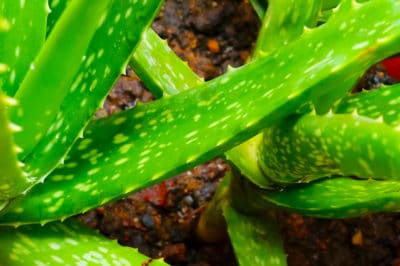Aloe Vera Basics
Aloes evolved in places where rains come infrequently. As a result, their leaves have adapted to store water. Most of the regions where aloes grow also tend to have poor soil. The combination of these factors resulted in plants that need excellent drainage to prevent rot but that have low fertility needs. Wherever you grow them, you must take these requirements into account.
Soil, Containers and Drainage
Over-watering and soggy soil are deadly to aloe vera. Unless you live in a desert area, you will probably need to amend soils or modify the growing area before planting aloes outdoors (USDA Zones 9 and above). For indoor plants, the right soil and container will ensure plant survival. Containers should be shallow, not too large and have plenty of drain holes.
Outdoor Soils
Here’s how to handle soil for outdoor aloes:
- Add amendments such as pumice, granite or coarse sand to native soil.
- Don’t use fine sand or granite dust.
- Dig out the soil and put six to eight inches of gravel under your aloe plants
- Grow aloes in raised beds.
- Build a special bed just for your aloes using all these strategies.
Commercial Cactus Mix
Commercial cactus mix is a good choice for aloe, as the plants require similar growing conditions. Most commercial mixes contain ingredients such as peat, bark, pumice, sand and perlite or vermiculite. Look for relatively large particle size, as this promotes better drainage. Do not use regular potting soil by itself, as it doesn’t drain well enough.
Potting Soil Plus
You can use potting soil if you modify it to promote better drainage. The biggest issue with potting soil is that it doesn’t drain fast enough. Add peat, finely shredded bark or coconut coir to help make the mix fluffy for better aeration. In addition, mix in granite dust, pumice or coarse sand. All of the latter should have relatively large particles. Use no more than one-third potting soil.
Don’t Use Too Much
No matter what kind of soil mix you choose (or make), it’s important not to use too much when planting in containers. First, aloes have relatively shallow roots and simply don’t need deep containers. Second, excess soil in a container increases the chance that the soil will become waterlogged instead of draining quickly. Repot aloe vera only once a year.
